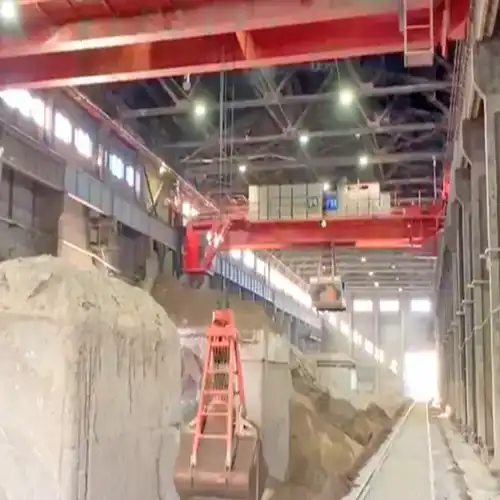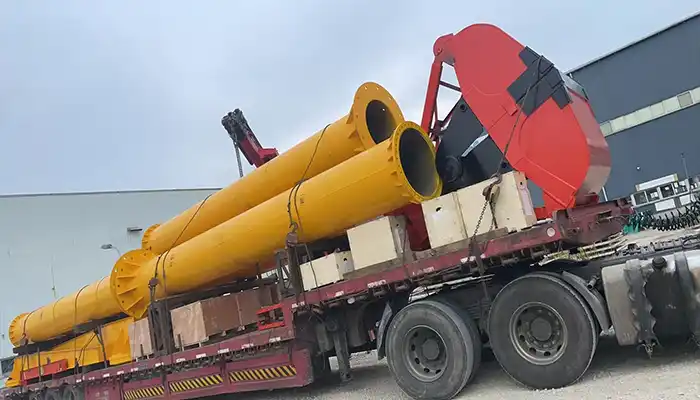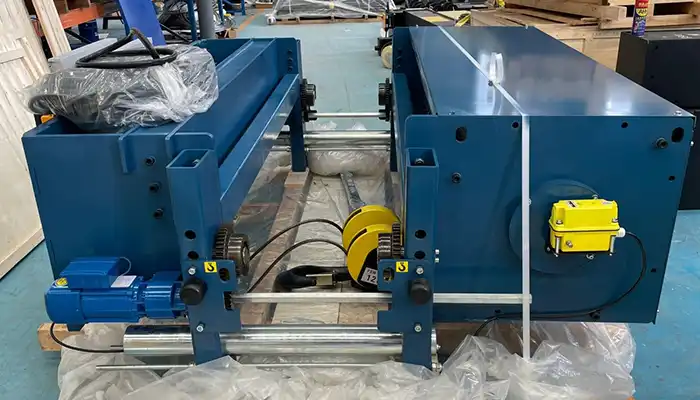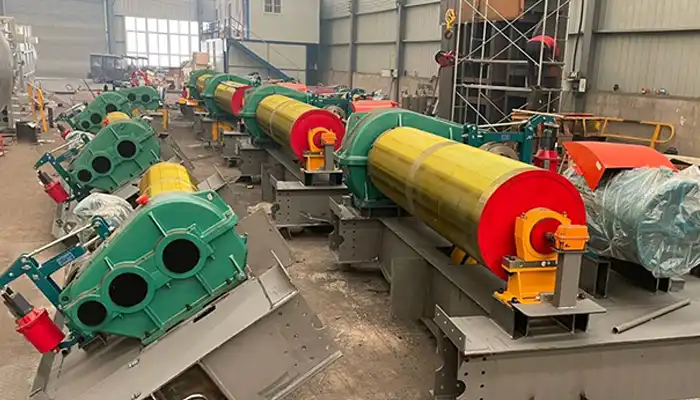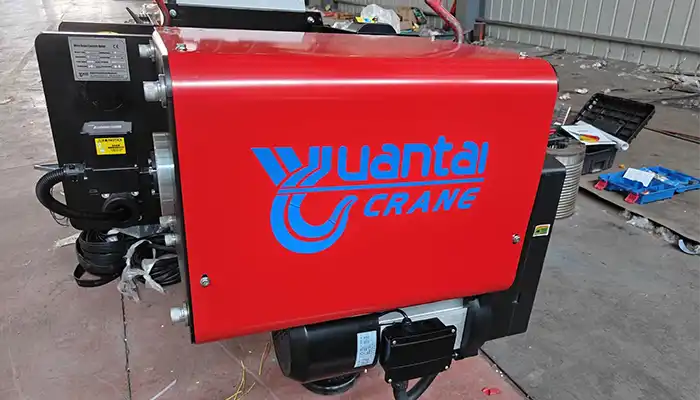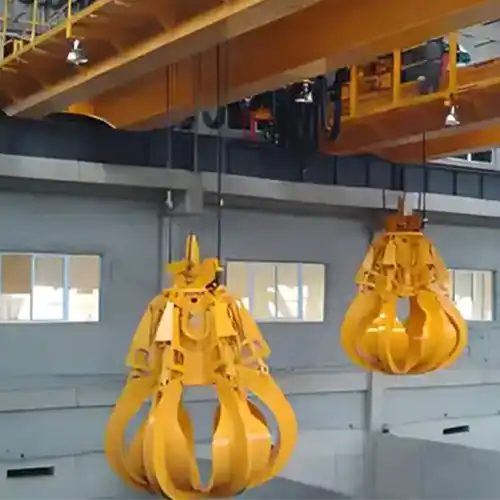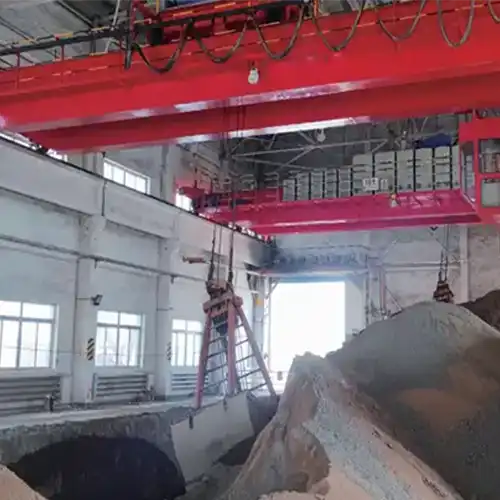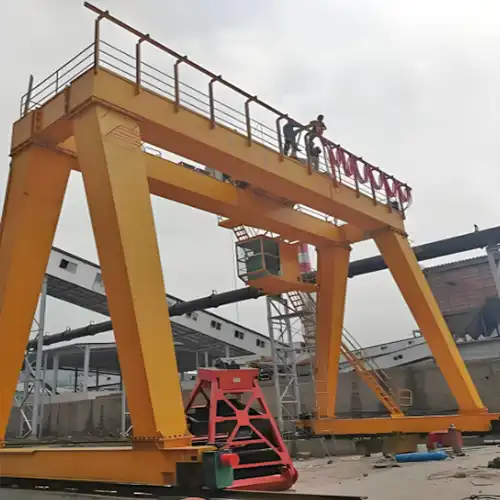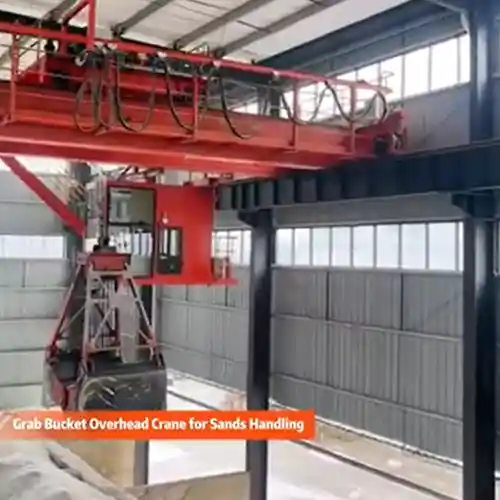Intelligent 16-Ton Grab Bucket Overhead Crane for Nickel Smelting
Unmanned control & advanced technologies improve efficiency, safety & reduce costs in challenging environments like nickel smelting plants.Get grab crane!
Category: Grab Crane
Your Trusted Grab Bucket Overhead Crane Manufacturer & Supplier
Case Study: Intelligent and Unmanned Control 16-Ton Grab Bucket Overhead Crane for Nickel Smelting Plant
Intelligent 16-Ton Grab Bucket Overhead Crane for Nickel Smelting
Unmanned control and advanced technologies improve efficiency, safety, and reduce costs in challenging environments like nickel smelting plants.
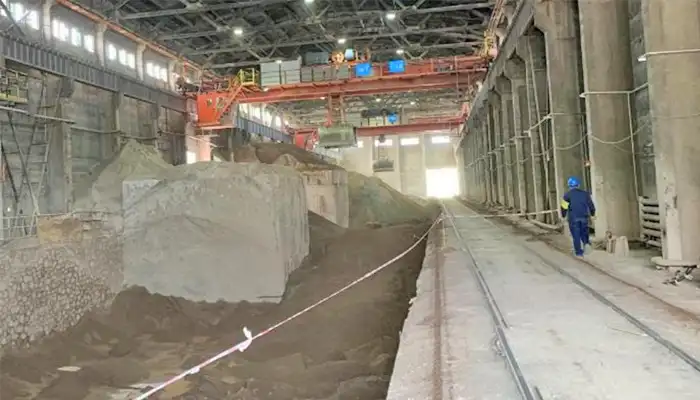
16 Ton Grab Bucket Overhead Crane
This case study focuses on the successful implementation of a 16-ton grab bucket overhead crane equipped with intelligent and unmanned control at a nickel smelting plant. The project aimed to tackle operational challenges within a harsh working environment while improving overall efficiency, lowering operational costs, and ensuring safer, automated crane operations.
The primary objectives of this project were:
- Enhance Operational Efficiency:
The main goal was to speed up the material handling process while minimizing errors and delays. Automating crane operations allowed for smoother, quicker, and more accurate movements, boosting overall productivity. - Unmanned Operation:
With fewer workers available and safety risks high, the plant aimed to reduce human involvement in crane operations. The unmanned control system was designed to make the cranes operate independently, reducing labor costs and eliminating human error in dangerous environments. - Advanced Control Systems:
To improve crane performance, especially in extreme conditions like high dust and temperature levels, advanced control systems were implemented. These systems made the cranes more reliable and precise during operations, even in challenging environments. - 5G and Digital Maintenance:
The integration of 5G technology allowed for better real-time communication between the crane and the control system. Additionally, a digital maintenance system was put in place to monitor the crane’s health and performance, predicting issues before they occurred and minimizing downtime.
In short, this project was about more than just upgrading cranes. It was about transforming the entire material handling process with smart technology, increasing safety, and ensuring long-term, efficient operation.
Challenges Faced by the Nickel Smelting Plant
Harsh Working Environment
The plant's environment posed significant challenges for traditional crane operations. High temperatures and heavy dust made it difficult for the cranes to operate at full efficiency. These tough conditions were also dangerous for human operators, pushing the plant to find a safer, more reliable solution.
Personnel Shortage
The plant was struggling to find and retain skilled labor. Recruiting operators, especially for the harsh environment, had become increasingly difficult. Safety concerns only added to the problem. As the demand for skilled workers decreased, it became clear that reducing human involvement in crane operations would help minimize risks.
Main Issues:
- Difficulty in hiring skilled crane operators.
- Safety risks due to the harsh environment.
- Overreliance on human operators.
Efficiency Problems
The existing cranes were not efficient enough to keep up with production demands. They caused delays and bottlenecks, which affected overall productivity. As a result, operational costs went up, and the plant struggled to meet its targets.
Challenges:
- Slow and outdated crane systems.
- Production delays and bottlenecks.
- Rising operational costs.
Increased Need for Automation
As production demands grew, the old systems couldn’t handle the load. The plant needed an automated solution to improve material handling, boost efficiency, and reduce reliance on manual labor. Automation was the obvious choice for speeding up operations while maintaining safety standards.
Why Automation Was Essential:
- Increased production demands.
- Faster, more reliable material handling required.
- Less human labor needed for crane operation.
These challenges—tough working conditions, labor shortages, inefficiency, and growing demand—highlighted the urgent need for a smarter, automated crane system that could improve both safety and productivity.
Project Implementation
System Design & Upgrades
The project required significant updates to both the crane’s electrical control systems and its operational technology. These upgrades were designed to ensure that the cranes could handle the new demands of automation and operate with greater efficiency and safety.
Electrical Control System
One of the key changes was the replacement of the outdated electrical control systems. The new system was built to support intelligent and unmanned operations. A PLC-based system (S7-1500) was integrated to take care of the logic control. This upgrade provided the following benefits:
- Improved Safety: The new system ensured better monitoring and control, reducing the risk of human error.
- Enhanced Performance: The upgraded control system allowed for faster, more accurate crane movements, boosting overall efficiency.
Frequency Drive Technology
Another major improvement was the installation of frequency drives on the cranes. These drives give the cranes more precise control over their movements. Here’s how it helped:
- Smoother Operation: The cranes could now adjust speeds more easily, leading to smoother lifts and reduced strain on mechanical parts.
- Reduced Wear and Tear: The use of frequency drives lowered the mechanical load, extending the crane’s lifespan and reducing the need for frequent repairs.
- Precision: With better control over speed and movement, the cranes could handle materials more accurately and safely.
These system upgrades ensured that the cranes would be able to operate efficiently and safely in an automated environment, meeting the plant’s needs for smarter material handling.
Intelligent Control Features
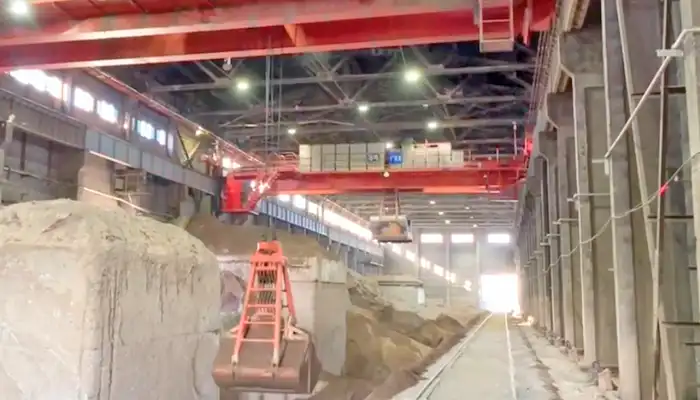
Unmanned Operation
One of the standout features of this upgrade was the shift to unmanned operation. The grab bucket cranes were retrofitted to function autonomously, meaning no direct human intervention is required during daily operations. This upgrade allowed the cranes to handle tasks like:
- Lifting and moving materials.
- Transporting materials from storage to the smelting area.
By removing the need for a crane operator to be present, the system not only cut down on labor costs but also reduced the risk of human error, enhancing both safety and operational efficiency.
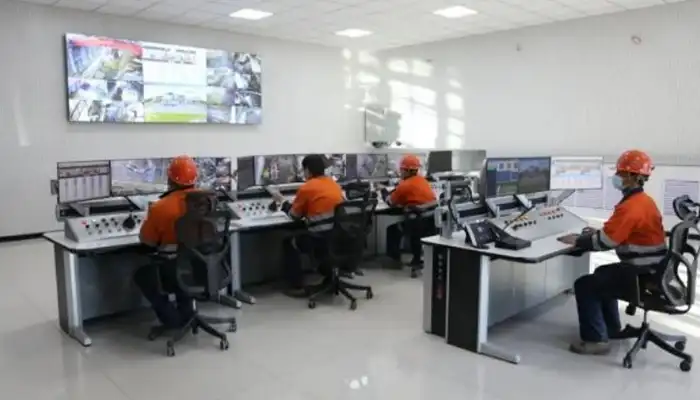
5G Integration
To further optimize crane operations, 5G technology was introduced. This allowed the cranes to send and receive real-time data, significantly improving overall performance. The key benefits included:
- Real-Time Monitoring: Data from the crane could be monitored instantly, giving operators a clear view of performance and allowing for quick adjustments.
- Improved Efficiency: The ability to collect and analyze data through cloud-based systems made crane operations smoother and more reliable.
With 5G, the plant could stay on top of crane performance, ensuring that any potential issues were addressed before they became major problems.
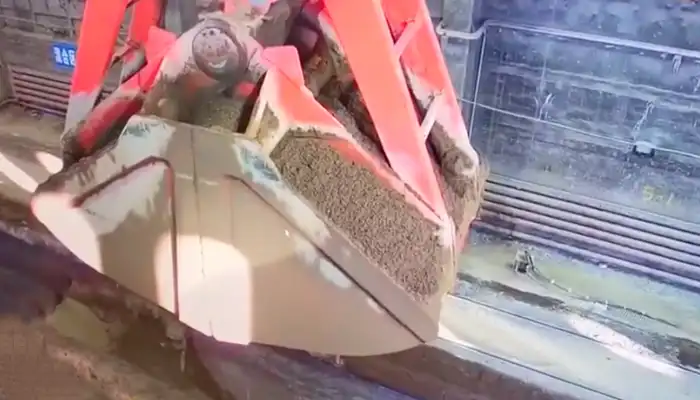
Load Stability & Anti-Sway Systems
Handling heavy loads safely is always a concern in crane operations. That's why the system was equipped with load stability and anti-sway features. The intelligent control system automatically adjusts crane movements to ensure:
- Minimal Swaying: Even with heavy loads, the cranes move smoothly without excessive swaying.
- Preventing Material Spillage: The controlled movements prevent materials from being spilled or dropped during transport.
- Enhanced Safety: With reduced swaying, the risk of accidents is minimized, making the operation safer for both the equipment and the environment.
These features ensure that the cranes maintain stability and precision, even under challenging conditions, making material handling more efficient and secure.
By integrating these intelligent control features, the cranes not only became more autonomous but also safer and more efficient, meeting the needs of the plant in a demanding and evolving industrial environment.
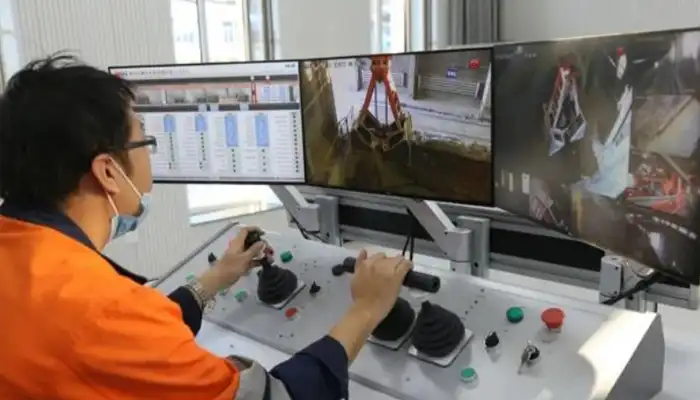
Maintenance and Monitoring
Digital Maintenance System
A key feature of the crane upgrade was the integration of a digital maintenance system. This system was designed to monitor the cranes' performance in real-time and provide valuable insights into their operation. Some of the main benefits include:
- Remote Monitoring: The system allows operators to check crane performance and health from a distance, eliminating the need for frequent onsite checks.
- Diagnostics: It provides detailed diagnostics, helping to identify potential issues early before they cause serious problems.
- Preventive Maintenance: By scheduling maintenance based on real-time data, the plant could prevent unexpected breakdowns and reduce downtime.
- Extended Equipment Lifespan: Regular monitoring and preventive care help keep the cranes in optimal condition for a longer period, saving on repair costs and improving overall reliability.
This system significantly reduced downtime and helped keep operations running smoothly, making it easier to manage the cranes even in a remote or automated setup.
Radar Material Recognition
Handling materials in a dusty and low-visibility environment can be tricky, but the installation of a radar-based material recognition system made a huge difference. Here’s how it helped:
- Real-Time Recognition: The radar system continuously scans and recognizes materials as they are lifted, even in poor visibility conditions caused by heavy dust or smoke.
- Efficient Material Handling: By accurately identifying materials, the system ensured that the crane could handle materials without confusion or error, keeping operations efficient and safe.
- Improved Accuracy: The radar system contributed to more precise movements, ensuring the correct materials were handled and moved without risk of mistakes.
This radar technology was especially valuable in the nickel smelting plant, where visibility issues are a common challenge, helping to maintain smooth operations despite the tough conditions.
By combining these advanced monitoring and maintenance systems, the plant ensured that the cranes operated at peak performance with minimal interruptions, improving the overall efficiency and reliability of material handling operations.
Key Outcomes and Benefits
Increased Efficiency and Reduced Costs
The upgrade to an intelligent, unmanned crane system made a major difference in the plant’s operations. Here’s how it helped:
- Streamlined Material Handling: By automating the process, the plant reduced its reliance on manual labor, speeding up material handling and improving overall efficiency.
- Faster, More Precise Operations: The new control system allowed the cranes to work faster with more precision, reducing errors and minimizing costly delays.
This combination of automation and precision not only made operations more efficient but also helped reduce operational costs significantly.
Enhanced Safety
Safety was a major concern for the plant, especially with the harsh working conditions. The intelligent crane system addressed this in several ways:
- Reduced Human Involvement: By limiting the need for operators in high-risk environments, the plant reduced the chances of accidents and injuries.
- Anti-Sway System: The system’s anti-sway feature ensured stable lifting and minimized the risk of accidents caused by load instability. This contributed to a safer working environment for both the equipment and the surrounding area.
Automation and Flexibility
The move to an automated system provided the plant with both consistency and flexibility:
- Autonomous Operation: With the ability to operate without human supervision, the cranes maintained a steady performance, even during peak production times. This helped the plant meet higher demands without needing extra labor or supervision.
- Scalability: The system’s flexibility meant it could easily adapt to future needs. If the plant wanted to add more cranes or expand operations, the system could scale up without a major overhaul.
Advanced Data Analytics
The integration of 5G and a digital maintenance system brought significant benefits in terms of data-driven decision-making:
- Real-Time Data Collection: The system collected valuable performance data, allowing plant managers to monitor crane health, maintenance needs, and operational metrics in real time.
- Informed Decision-Making: By having access to accurate, up-to-date data, managers were able to make more informed decisions, improving overall plant productivity and ensuring smooth operations.
Cost Savings
The financial benefits of the retrofit were clear:
- Significant Savings on Upgrades: The intelligent crane system retrofit saved the plant around one million in upgrade costs compared to traditional methods of automation and crane replacement.
- Lower Operational Costs: Fewer breakdowns, reduced need for human labor, and better overall performance led to substantial savings over time. The plant was able to cut costs and improve the return on investment by upgrading rather than replacing old equipment.
In summary, the implementation of the intelligent, unmanned crane system delivered multiple benefits, including increased efficiency, enhanced safety, lower costs, and greater flexibility. The system provided the plant with not only immediate improvements but also long-term advantages as it continued to grow and evolve.
Conclusion
The installation of the intelligent, unmanned 16-ton grab bucket overhead crane at the nickel smelting plant has been a major success. By integrating cutting-edge technologies such as 5G, radar material recognition, and an advanced electrical control system, the project has achieved significant improvements in operational efficiency, safety, and cost-effectiveness. The smart crane system has raised the bar for automation in tough industrial environments, setting a strong foundation for future automation in the sector.
The success of this project has sparked plans for further automation throughout the plant’s operations. The plant is looking at:
- Expanding Automation: More cranes will be added, and the use of artificial intelligence for predictive maintenance and optimization will be expanded.
- Continuous Improvement: With each upgrade, the plant aims to enhance efficiency and reduce costs even further.
The results from this project show that automation can be successfully applied in harsh, challenging environments. As a result:
- Wider Application: The solution could be adapted and deployed in other mining and smelting plants globally, helping companies reduce operational risks and boost productivity.
- Global Reach: The success of this intelligent crane system opens doors for similar applications in various industries, ensuring more companies can benefit from these technological advancements.
In conclusion, this project has not only transformed the nickel smelting plant’s operations but also paved the way for future innovations in industrial automation, offering a blueprint for other sectors facing similar challenges.
Main Projects
Related Products
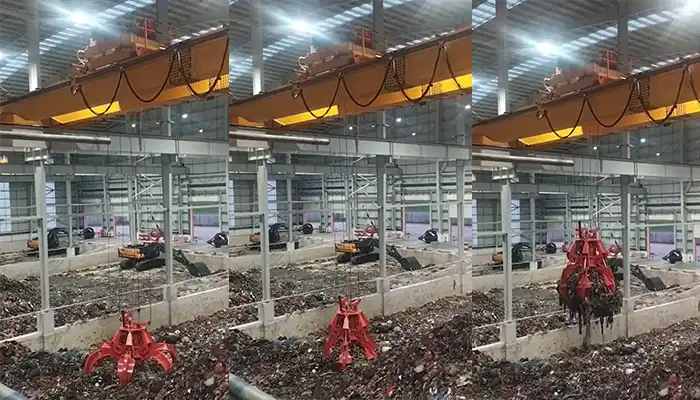
Supplied three grab bucket crane kits to Indonesia, enhancing garbage handling efficiency with high load capacity and reliable performance.
Free consultation to Confirm Parameters & Specifications and Get
Latest Crane Price & Crane Rate.
- Types of overhead cranes : _______?
- Optional: Overhead travelling crane, goliath gantry crane,Slewing jib crane, Single girder or double girder crane,small portable crane or kbk crane, etc.
- Capacity of overhead crane: _______?
- Optional: 0.25ton, 0.5 ton, 1 ton, 2 ton, 3ton, 5 ton, 10 ton,15ton, 20ton, 25 ton, 30ton,35ton, up to 550ton, etc.
- Crane span & lifting height : _______?
- Crane travelling length : _____?
- Control of overhead crane:_______?
- Optional: pendant/ remote/cabin control
- Voltage supply of overhead crane:_____?
- Eg,: 380V50/60HZ,3Phase or others,etc.
- Application/usage of crane:_______?
- Eg,: Steel mill, ,injection mold, cement,stone, concrete,granite, general manufacturing, etc.
Just leave a message via the contact form and our hoist and crane engineer will contact you with in 24working hours.
Get In Touch
